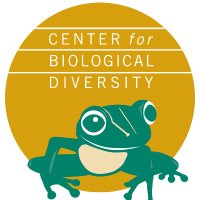
Nathan Donley
@nathan_donley
Environmental Health Science Director @CenterForBioDiv. Former Cancer Researcher at #OHSU. Ph.D in Cellular Biology. Email: ndonley*at*biologicaldiversity.org
ID: 4715213240
http://www.biologicaldiversity.org/ 05-01-2016 20:32:50
7,7K Tweet
2,2K Followers
898 Following



Anatomy of a science meeting: How controversial pesticide research all but vanished from a major conference via U.S. Right To Know usrtk.org/bees-neonics/e…

Nearly all bees visiting NY orchards during bloom are exposed to pesticides. Honey bees, which travel farther than many wild bees, are exposed to more pesticides - including high levels of neonics, likely from seed-treated corn planted during apple bloom. besjournals.onlinelibrary.wiley.com/doi/abs/10.111…




Opinion: Legislators on both sides of the aisle should "stand up for consumers and reject Bayer AG’s immoral push to block people suffering from cancer from suing the company," writes Nathan Donley of Center for Biological Diversity. Pesticide Action & Agroecology Network Beyond Pesticides thenewlede.org/2024/07/congre…

Opinion: Bayer AG "tried to covertly influence [glyphosate] research that was then falsely presented as being independent of the chemical giant," writes Nathan Donley of Center for Biological Diversity. Pesticide Action & Agroecology Network Beyond Pesticides thenewlede.org/2024/07/congre…

New research from PEER, Center for Biological Diversity, and EWG published today in Environmental Health Perspectives found that more and more toxic PFAS, known as “forever chemicals,” are being found in U.S. pesticide products, contaminating our food, our homes, our gardens, and our pets. ow.ly/MWU050SJamh


DRIVE TIME 🔊: Nathan Donley, environmental health science director at the Center for Biological Diversity, joins Michael Wallace to discuss forever chemicals being found in pesticides used in homes, on food and on pets 🧪 bit.ly/4feRmZp


Study Finds ‘Forever Chemicals’ Are Increasingly Common in Pesticides “What our research showed is that this issue is a lot bigger than many people have thought, and the trend is really worrisome.” –Nathan Donley buff.ly/4ddCxnV


#ICYMI...NEW COMMENTARY: Forever Pesticides: A Growing Source of PFAS Contamination in the Environment ➡️ buff.ly/3LENoLS Nathan Donley Dr. Kyla Bennett, PEER




Opinion piece by myself and Dr. Kyla Bennett, PEER on the emerging threat of PFAS in pesticides We don't know yet if the lasting harms will rival that of DDT, but do we really need to roll the dice? scientificamerican.com/article/pfas-i…

